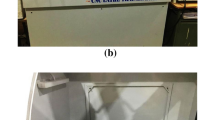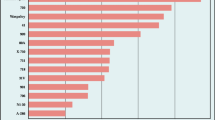Abstract
Titanium alloys and nickel based superalloys are used in various demanding applications because of their excellent high temperature properties, especially high strength and good corrosion and fatigue resistance. However, the high strength and hardness at high temperatures combined with strong strain hardening can lead to difficulties in machining of these alloys. Finite element simulations can be used to optimize the cutting conditions and to reduce the machining costs. However, simulations of machining operations require accurate material models that can only be built on reliable experimental data. Also, the mechanical properties of materials can only be measured in a limited range of strain and strain rate at the laboratory scale, from which the material behavior has to be extrapolated to the actual machining range. In this work, the mechanical behavior of Titanium-6246 and a nickel based superalloy, similar to Inconel 625, has been studied in details. The Johnson-Cook material model parameters were obtained from the experimental data and the model was used to describe the plastic behavior of the studied alloys in simulations of orthogonal cutting of the material. The model for the Ni- based superalloy was improved by introducing an additional strain softening term that allows decreasing of the strain hardening rate at large deformations. The preliminary simulation results have also been verified experimentally by comparing the simulation results with machining experiments, and the results of the simulations are briefly presented and discussed. The material models are able to reproduce the serrated chips with split shear bands, but the cutting stresses obtained from the simulations are somewhat higher than those obtained from the cutting experiments. Also, some differences were observed in the chip shape, and further development of the material model and simulations is needed.











Similar content being viewed by others
References
Ezugwu EO, Bonney J, Yamane Y (2003) An overview of the machinability of aeroengine alloys. J Mater Process Technol 134:223–252
Ezugwu EO, Wang ZM, Machado AR (1999) The machinability of nickel-based alloys: a review. J Mater Process Technol 86:1–16
Fang N, Wu Q (2009) A comparative study on the cutting forces in high speed machining of Ti-6Al-4V and Inconel 718 with a round cutting edge tool. J Mater Process Technol 209:4385–4389
Costes JP (2007) Tool-life an wear mechanisms of CBN tools in machining of Inconel 718. Int J Mach Tool Manuf 47:1081–1087
Dudzinski D, Devillez A, Moufki A, Larrouquere D, Zerrouki V, Vigneau J (2004) A review of developments towards dry and high speed machining of Inconel 718. Int J Mach Tool Manuf 44:439–456
Wang ZY, Rajurkar KP, Fan J, Lei S, Shin YC, Petrescu G (2003) Hybrid machining of Inconel 718. Int J Mach Tool Manuf 43:1391–1396
Mitrofanov AV, Ahmed N, Babitsky VI, Silberschmidt VV (2005) Effect of lubrication and cutting parameters on ultrasonically assisted turning of inconel 718. J Mater Process Technol 162–163:649–654
Ahmed N, Mitrofanov AV, Babitsky VI, Silberschmidt VV (2006) Analysis of material response to ultrasonic loading in turning Inconel 718. Mater Sci Eng A 424:318–325
Dong G, Zhaopeng H, Rongdi H, Yanli C, Muguthu J (2011) Study of cutting deformation in machining nickel-based alloy Inconel 718. Int J Mach Tool Manufacture 51:520–527
Ulhmann E, Graf von der Schulenburg M, Zettier R (2007) Finite element modeling and cutting simulations of Inconel 718. Ann CIRP 56:1
Ortiz M, Quigley JJ (1991) Comput Methods Appl Mech Eng 90:781–804
Marusich T, Ortiz M (1995) Int J Numer Methods Eng 38:3675–3694
Sima M, Özel T (2010) Int J Mach Tool Manuf 50:943–960
Calamaz M, Coupard D, Girot F (2008) Int J Mach Tool Manuf 48:275–288
Calamaz M, Coupard D, Girot F (2010) Mater Sci Technol 14:244–257
Vaz M, Owen DR, Kalhori V, Lundblad M, Lindgren L (2007) Arch Comput Methods Eng 14(2):173–204
Johnson G, Cook W (1983) In the Proceedings of the 7th International Symposium on Ballistics
Johnson G, Cook W (1985) Int. J. Eng Fract Mech
Lodygowski T, Rusinek A, Jankowiak T, Sumelka W (2012) Eng Trans 60:69–96
Rusinek A, Klepaczko J (2001) Int J Plast 17:87–115
Perzyna P (2008) Mechanics 27:25–42
Apostol M (2007) Ph.D. thesis, Tampere University of Technology
Apostol M, Kuokkala V-T, Vuoristo T (2004) In: Papalettere C (ed) Advances in Experimental Mechanics. McGraw-Hill, Bari Italy
Apostol M, Vuoristo T, Kuokkala V-T (2003) J de Phys IV 110
Gorham D (1983) J Phys E: Scientific Instruments, 16.
Hokka M, Kuokkala V-T, Curtze S, Vuoristo T, Apostol M (2006) J de Phys 134
Hokka M, Leemet T, Shrot A, Baeker M, Kuokkala V-T (2012) Mater Sci Eng A 550:350–357
Vuoristo T (2004) Ph.D. thesis, Tampere University of Technology
Meyers M (1994) Dynamic Material Behavior. John Wiley and Sons, USA
Shrot A, Bäker M (2012) Determination of Johnson-Cook parameters from machining simulations. Comput Mater Sci 52:298–304
Acknowledgments
The research leading to these results has received funding from the European Union Seventh Framework Programme (FP7/2007-2013) under grant agreement No. PITN-GA-2008-211536, project MaMiNa.
Author information
Authors and Affiliations
Corresponding author
Rights and permissions
About this article
Cite this article
Hokka, M., Gomon, D., Shrot, A. et al. Dynamic Behavior and High Speed Machining of Ti-6246 and Alloy 625 Superalloys: Experimental and Modeling Approaches. Exp Mech 54, 199–210 (2014). https://doi.org/10.1007/s11340-013-9793-7
Received:
Accepted:
Published:
Issue Date:
DOI: https://doi.org/10.1007/s11340-013-9793-7




